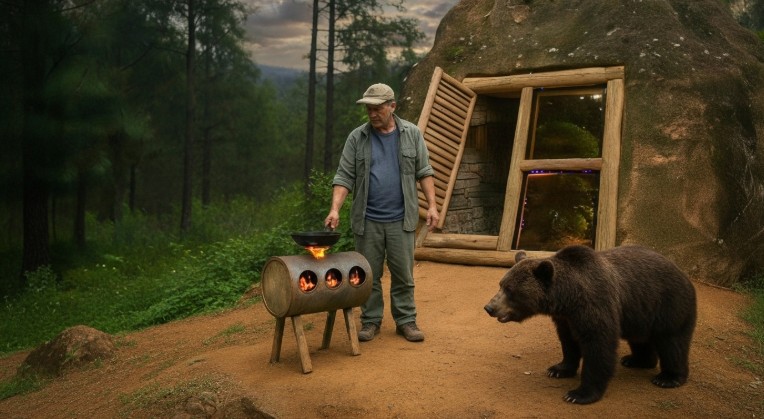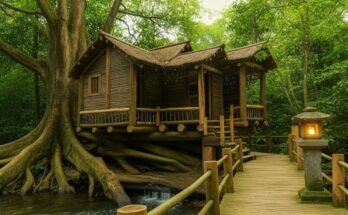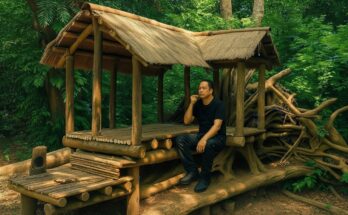
The process of building a hidden cliff shelter in the rainforest started with careful site selection. I chose a spot where natural rock formations could provide a solid foundation and some shelter from the elements. The cliffside location came with its challenges, requiring precise planning to work safely and ensure the structure would be stable and functional.
I gathered natural materials nearby—wood, bamboo, leaves, vines—and began crafting the shelter’s frame. I lashed the wooden pieces together, securing them to the rocks and shaping the walls to fit tightly against the stone. This careful fitting was essential to blend the shelter into the environment, making it inconspicuous to wildlife and others.
For the roof, I layered woven palm leaves and thick forest foliage to create a waterproof covering that would shed rain and provide insulation. This process was slow and required patience to position and secure the material properly. I made sure the roof pitched well to avoid water pooling during heavy rain, which is common in the rainforest.
I set up a small firepit area designed for warmth and cooking while minimizing fire risk in the dense forest. The pit was carefully constructed and surrounded by stones and mud. Nearby water sources were identified, and I used natural filtration methods to collect potable water.
Survival in the shelter also depended on the local food supply, so I engaged in catch-and-cook practices using primitive tools crafted by hand. Throughout the building process, I remained adaptable, responding to environmental challenges, and making adjustments as necessary.
This project was a test of endurance, skill, and respect for nature, resulting in a safe, hidden shelter that provides comfort and protection high above the rainforest floor. It showcases how traditional knowledge and primitive technology can create effective and sustainable living spaces in the wild.


